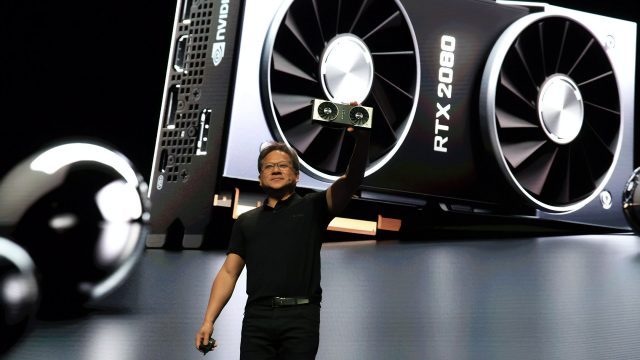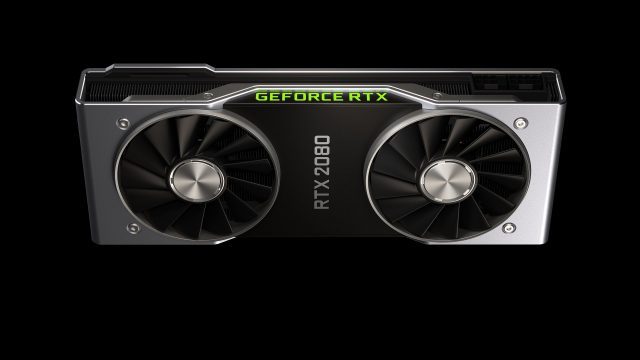After months of rumors, NVIDIA’s latest gaming-focused GPUs have been revealed. Today the company took the wraps off the GeForce RTX 2080 Ti, 2080, and 2070. Starting at $500, the cards are set to begin shipping in September.
The GeForce RTX cards are based on what NVIDIA calls its new ‘Turing’ architecture, which is built to accelerate real-time ray-tracing operations to bring more realistic lighting and shading to games.
The GeForce RTX GPU lineup follows a familiar hierarchy to the prior 10-series cards:
| GeForce GPU | Ray Tracing | Performance* | Memory | Starting At | Founders Edition | ||
| RTX 2080 Ti | 10 GigaRays/sec | 78T RTX-OPS | 11GB | $1,000 | $1,200 | ||
| RTX 2080 | 8 GigaRays/sec | 60T RTX-OPS | 8GB | $700 | $800 | ||
| RTX 2070 | 6 GigaRays/sec | 45T RTX-OPS | 8GB | $500 | $600 | ||
All of the GeForce RTX cards also offer hardware support for the VirtualLink VR connector, which is designed for the next generation of VR headsets. It appears that all of NVIDIA’s ‘Founder’s Edition’ GPUs will include the USB-C based port alongside DisplayPort and HDMI ports. The company’s professionally-focused Quadro RTX cards were also recently announced with support for the VirtualLink connector.

NVIDIA says the GeForce RTX GPUs feature “New and enhanced technologies to improve performance of VR applications,” including “Variable Rate Shading, Multi-View Rendering and VRWorks Audio.” We’ll be looking forward to getting our hands on the new cards to see how they fare with VR rendering specifically.

Pre-orders for the GeForce RTX Founder’s Edition cards from NVIDIA are available starting today (links in the chart above), with the 2080 Ti and 2080 expected to ship starting on September 20th, while the 2070 release date hasn’t been announced just yet.






